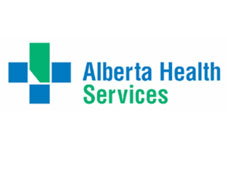- News Front Page
- Uncategorized
- Headline News
- Filipino Calgarian
- Business
- Pinoy Stories
- Community News
- Publisher's Note
- The Main Ingredient
- Views and Opinions
- Maikling Kwento
- Alberta News
- OFW – Month
- Travel News
- Health and Lifestyle
- Pinoy Toons
- Pinoy Spirit
- Entertainment
- The Philippine Lawyer
- Horoscope
- Greetings
- About Us
- Greetings From the Prime Minister
- Greetings from the President of the Philippines
- Greetings from the Premier of Alberta
- Greetings from the Mayor of Calgary
- Advertise With Us
- Disclaimer
- Subscription
Publisher's Note
- Publisher’s Note
 It was 22 years ago when I arrived in Canada and chose Calgary, Alberta to be my home. Leaving my family and friends behind, it was a new adventure for me to be in a new country without knowing anyone. That was the time I looked for a Filipino community paper and never found any, [...]
It was 22 years ago when I arrived in Canada and chose Calgary, Alberta to be my home. Leaving my family and friends behind, it was a new adventure for me to be in a new country without knowing anyone. That was the time I looked for a Filipino community paper and never found any, [...]
Visitors to Pinoytimes
Page added on August 26, 2010
PROTECT YOURSELF FROM THE SUN THIS SUMMER

FACTS ABOUT SKIN CANCER
Skin cancer by the numbers
- 68,000: Total non-melanoma skin cancer cases in Canada, 2006*
- 4,500: Number of new melanoma cases in Canada, 2006
- 880: Number of deaths from melanoma in Canada, 2006
* The vast majority of non-melanoma cases in Canada are successfully treated without hospitalization.
Source: Canadian Cancer Society: Canadian Cancer Statistics
Sun Safety Tips
- Use sunscreens with SPF 15 or higher;
- Apply sunscreen 20 minutes before exposure and re-apply every two hours (if swimming, use a waterproof lotion);
- Wear a wide-brimmed hat;
- Wear sunglasses;
- Keep babies under one year of age out of direct sunlight (using covered strollers, umbrellas or shade);
- Teach children good sun safety habits and how to seek shade during peak afternoon sun hours;
- Protect your child with loose-fitting clothing (that covers most of their bodies). Children at most risk are fair-skinned, usually burn instead of tanning, have blond or red hair, freckles or many moles.
What is Skin Cancer?
There are three types of Skin Cancer:
Melanoma
This is the least common but most serious form of skin cancer. It usually starts as a flat brown spot that looks like a freckle. Edges are irregular and the whole spot is often asymmetrical with two or more colours (grey, red and brown mixtures). Commonly found on the upper back in men and calf or lower back in women.
Non-Melanoma
Basal Cell Carcinoma: Usually occurs on a sun-exposed area and begins as a raised, translucent blister-like bump. It grows larger and eventually becomes crusted and may be clear, flesh-coloured or pigmented.
Squamous Cell Carcinoma: Usually develops because of severe sun damage in which a patient has multiple “premalignant” lesions, usually pink or brown. They are more scaly and, if picked off, will form again.
Ultraviolet Radiation
Ultraviolet light works in different ways to cause skin cancer. Each time skin is exposed to the sun and becomes tanned or burned, damage is done to individual cells and to DNA. Some cells die and some repair themselves by getting rid of the damaged DNA. Cells that cannot repair themselves eventually become defective. Ultraviolet rays lower the body’s immune system, and this makes it difficult to destroy defective cells. Defective cells that are not destroyed slowly grow and produce a tumour
There are Three Types of UV Rays:
UVA rays:
While not as powerful as UVB, they penetrate more deeply into the skin and are responsible for contributing to wrinkling of the skin. UVA is prevalent in tanning parlours where tanning devices can emit UVA rays at between two and five times the intensity found in natural sunlight.
UVB rays:
Shorter but stronger than UVA, UVB rays primarily affect the skin’s outer layers and are thought to be the primary cause of sunburn, skin aging and skin cancer. UVB rays tend to be more intense during the summer months and at higher altitudes. Repeated exposure to UVB can cause skin cancer and alter the body’s immune system.
UVC rays:
These are the strongest and most dangerous rays. However, little attention is given to UVC rays because they are normally filtered out by the ozone layer.
Indoor tanning: As noted above, tanning beds and sun lamps can release harmful UVA rays. The Canadian Cancer Society says indoor tanning has been linked to skin cancer. It also notes that the World Health Organization recommends that people under the age of 18 should not use tanning beds or sunlamps. For more information, visit www.cancer.ca and search for indoor tanning.
For other skin cancer related questions, please call Calgary health link at 403-943-LINK(5465) or visit www.calgaryhealthregion.ca.
RELATED STORIES
LATEST HEADLINES
- ISKWELAHANG PILIPINO (IP) RONDALLA OF BOSTON WINS THE HEARTS OF CALGARIANS
- Pinay doctor joins Medicus Family Clinic and Pharmacy
- Multicultural Ethnic Media round table with Minister of Finance Joe Ceci together with Minister of Social Services Irfan Sabir
- Trans Mountain Pipeline keeps Canada working
- Facilitating travel to Canada while keeping Canadians safe
COMMUNITY NEWS
 A new way forward for some immigration application processing times
A new way forward for some immigration application processing times Calgary Stampede 2018 Poster
Calgary Stampede 2018 Poster Alberta celebrates first Philippine Heritage Month
Alberta celebrates first Philippine Heritage Month UPAAA Welcomes New Philippine Consul General
UPAAA Welcomes New Philippine Consul GeneralPINOY STORIES
 Duterte signs National ID System Act
Duterte signs National ID System Act- Holy Week practices in the Philippines
PINOY SPIRIT
HAVE YOUR SAY
Lorem ipsum dolor sit amet, consectetur adipiscing elit, dolor sit ipsum.PROMOTIONAL BLOCK
Lorem ipsum dolor sit amet, consectetur adipiscing elit, dolor sit ipsum.TRAVEL NEWS
PINOY TOONS
Tags
Archives

















